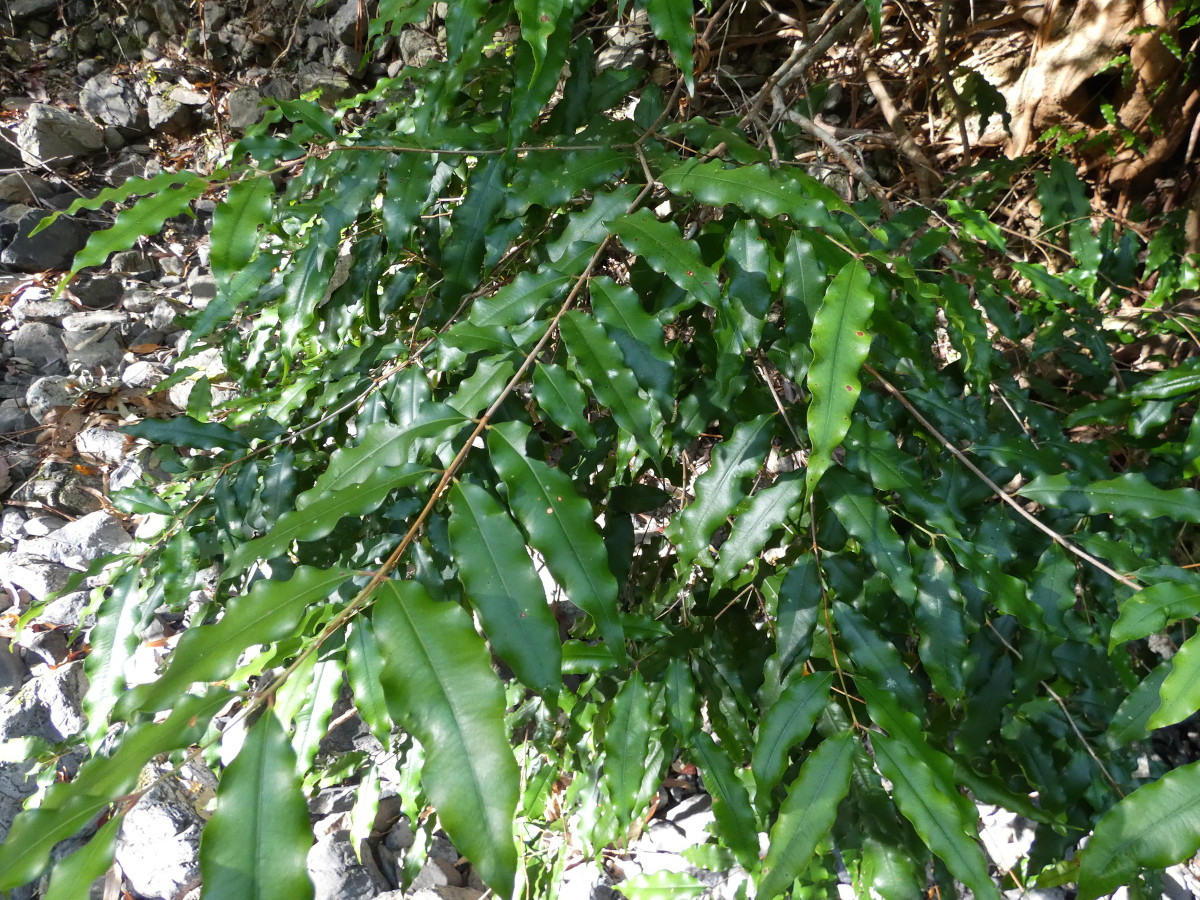Syzygium anisatum (Vickery) Craven & Biffen - syn.Backhousia anisata Vickery; Anetholea anisata (Vickery) Peter G.Wilson - Myrtaceae
aniseed tree, aniseed myrtle, anise myrtle, Anismyrte
Tree, native to the rainforests of Australia.
„The leaf from cultivated plantations is used as a bushfood spice and distilled for the essential oil, and is known in the trade as aniseed myrtle or anise myrtle… 'Aniseed myrtle' is the name originally coined to specifically describe high quality selections of the trans-anethole chemotype (90%+) - generally recognized as safe for flavouring. These selections are propagated from cutting for consistent essential oil quality. The aniseed myrtle selections are also low in methyl chavicol and cis-anethole (less than 0.1%). “ wikipedia
„Backhousia anisata Vickery has been found to occur in two chemotypes. One chemotype contains E-anethole (90+ %) as its major component with small amount of methyl chavicol (< 5%) and very little Z-anethole (<0.1%). The second chemotype contains methyl chavicol (60-75%) as its major compound with smaller amounts of E-anethole (< 25%) and Z-anethole (<0.1%). In both cases the oil yield was 1-1.5% based on fresh leaves.“
[Brophy, Joseph J., and Douglas J. Boland. „The leaf essential oil of two chemotypes of Backhousia anisata Vickery.“ Flavour and fragrance journal 6.3 (1991): 187-188]
„The EO is extracted by steam distillation of the leaves and the major aromatic volatile compound is anethole. The EO has broad spectrum antimicrobial activity but is more effective against bacteria than fungi. Indigenous Australians have used anise myrtle for its medicinal values and in recent times it has been used as a flavoring agent by the food and beverage industry.“
[Sultanbawa, Yasmina. „Anise myrtle (Syzygium anisatum) oils.“ Essential Oils in Food Preservation, Flavor and Safety. Academic Press, 2016. 215-219]
Aqueous and methanolic extracts of Synzygium anisatum inhibited the growth of some pathogenic bacteria.
„Their lack of toxicity indicates than they are safe for internal as well as topical treatment.“
[Bryant, Krystal, and Ian Edwin Cock. „Growth inhibitory properties of Backhousia myrtifolia Hook. & Harv. and Syzygium anisatum (Vickery) Craven & Biffen extracts against a panel of pathogenic bacteria.“ Pharmacognosy Communications 6.4 (2016): 194]

Syzygium anisatum leaves, Gleniffer NSW 2454, Australia (2018) © Nick Lambert CC BY-SA 4.0 inaturalist.org

Flowers of Syzygium anisatum (cultivated, labelled as Anetholea anisata) , Royal Botanic Gardens Cranbourne, Victoria, Australia (2014)
CC BY-SA 3.0 Wikimedia Commons

